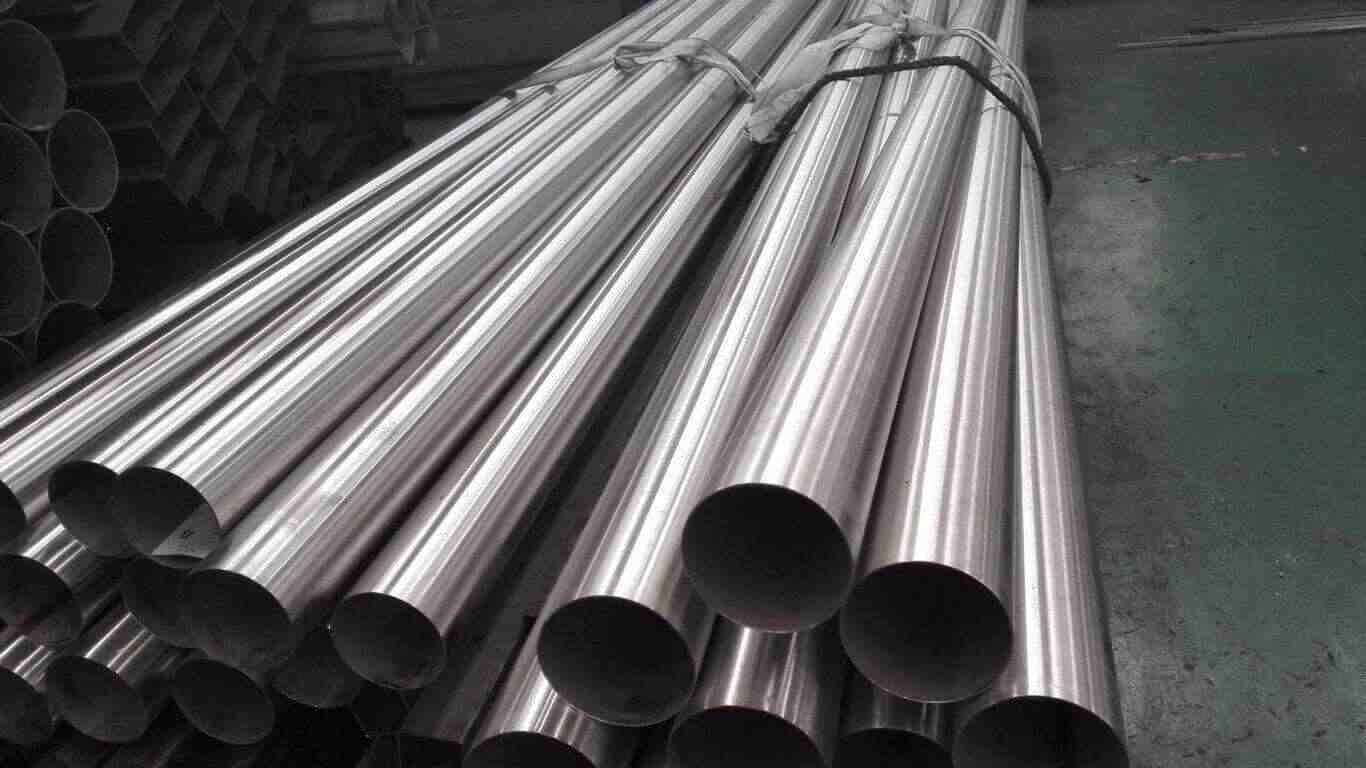Notifications
Stainless steel has become one of the most preferred materials for piping systems in various industries due to its excellent combination of strength, corrosion resistance, and durability. It is particularly ideal for environments where materials are exposed to harsh conditions, high temperatures, or corrosive substances.

Corrosion Resistance
Among all benefits of employing stainless steel in piping systems, the corrosion resistance is one of the greatest benefits. Stainless steel is very resistant to waters, steam, and chemicals, and can be used by industries that exploit severe conditions like chemical, oil, and the food industries. The corrosion-resistant properties of stainless steel help to extend the lifespan of pipes, reducing the need for frequent maintenance or replacements.
In particular, Stainless Steel 304L Pipes are well-regarded for their resistance to both corrosion and oxidation, making them an excellent choice for piping systems exposed to atmospheric conditions, mild chemicals, and food processing environments.
Durability and Strength
Stainless steel is known for its durability and strength. It is capable of withstanding high pressures and extreme temperatures, making it suitable for demanding environments. Whether it's a high-pressure steam line, a hot water system, or industrial machinery, stainless steel pipes maintain their structural integrity over time. This resilience helps prevent the risk of pipe failure, leaks, or ruptures, ensuring the reliability and safety of the piping system.
Temperature Resistance
A desirable aspect of stainless steel piping is its ability to meet its mechanical requirements independent of temperature. It remains stable at both high and low temperatures and is optimum for use where industrial use requires thermal stability as in electricity generating plants, oil mills, or air conditioning. For example, stainless steel 304L pipes are used for applications to 870 °C (1600 °F) in intermittent service and 925 °C (1700 °F) in fixed service due to high use temperatures.
Low Maintenance and Longevity
Stainless steel piping systems are low maintenance due to their resistance to rust, corrosion, and staining. Unlike other materials such as carbon steel, stainless steel does not require frequent cleaning or repainting, making it cost-effective in the long term. The corrosion resistance of stainless steel also prevents the buildup of rust and scale inside the pipes, maintaining the flow of liquids and gases without blockages or restrictions. As a result, stainless steel pipes offer a long lifespan, reducing downtime and maintenance costs for industrial operations.
Aesthetic Appeal
While the functional benefits of stainless steel are often the primary considerations, its sleek, shiny, and clean appearance also makes it a popular choice in visible applications. Stainless steel pipes are commonly used in architectural structures, food and beverage production, and sanitary applications, where both form and function are important. The outer surface of stainless steel pipes looks elegant and sophisticated, and for this reason, stainless steel pipes are recommendable for classy or hygienic settings.
Environmental Impact
In recent years, the demand for environmentally friendly materials has increased, and stainless steel has emerged as one of the most sustainable options. It is 100% recyclable, which means that stainless steel piping systems can be reused or repurposed at the end of their life cycle. This minimizes wastage and puts stainless steel in a better position than other forms of packaging such as plastic or other non-recyclable metals.
Versatility and Adaptability
There is a broad spectrum of available standard and customized stainless steel pipes in terms of grade, size and shape. Stainless steel piping is used for industrial, commercial or residential purposes and there is virtually a solution for any requirement. Moreover, stainless steel can easily be joined to the pipes using welding and it can also be fabricated into various elaborate forms so as to accommodate various PAC layouts.
Chemical and Petrochemical Industries
Corrosive chemicals, oils, and gasses in chemical plants, oil refineries, and petrochemical facilities are conveyed by stainless steel piping. Because of its high resistance to corrosion and high temperature strength, it is suited to these harsh conditions. Stainless Steel 304L Pipes are particularly useful in applications where the piping needs to withstand both chemical exposure and elevated temperatures.
Food and Beverage Processing
In the food and beverage industry, stainless steel is used for pipes that carry liquids and gases. The material is non-reactive and does not leach harmful substances into food or beverages, making it a safe and hygienic choice for food-grade piping. Additionally, stainless steel is easy to clean, which is a critical factor in preventing contamination in food processing systems.
Pharmaceutical Industry
Stainless steel piping systems are also widely used in pharmaceutical industries as well. Stainless steel does not allow any chemicals including bacteria to penetrate its surface, and can sustain the higher chemical and heat temperatures necessary for passing on sensitive substances or elements without the risk of deterioration. In pharmaceutical production, stainless steel pipes are used in production lines, reactors and storage vessels as well.
Power Generation
Power plants utilize stainless steel piping systems to transport steam, water, and other fluids throughout the plant. The high pressure and temperature conditions found in power plants make stainless steel the ideal material for these demanding environments. Its thermal resistance and strength at elevated temperatures ensure safe and efficient operation in power generation systems.
Water Treatment Systems
Stainless steel pipes are used in water treatment plants to carry water and other fluids through various treatment processes. Their resistance to corrosion from chlorinated water makes them suitable for these applications, helping ensure the integrity of the system over time.
Stainless steel is an excellent choice for piping systems due to its corrosion resistance, strength, temperature resilience, and long-lasting performance. It is widely used in industries such as chemical processing, food and beverage, pharmaceuticals, and power generation, where durability and safety are critical. With its ability to withstand harsh environments and deliver reliable performance, stainless steel remains one of the most dependable materials for piping systems.